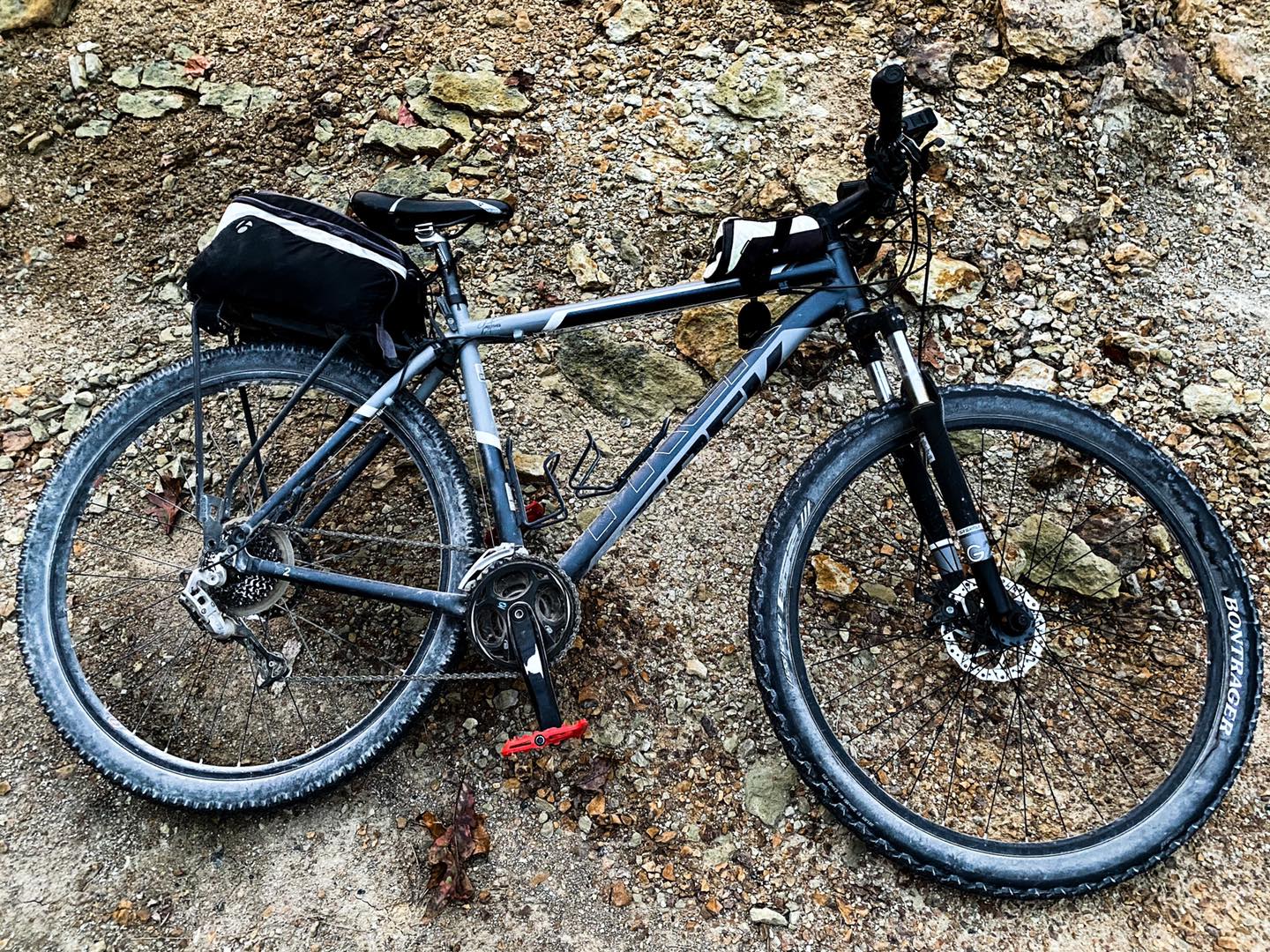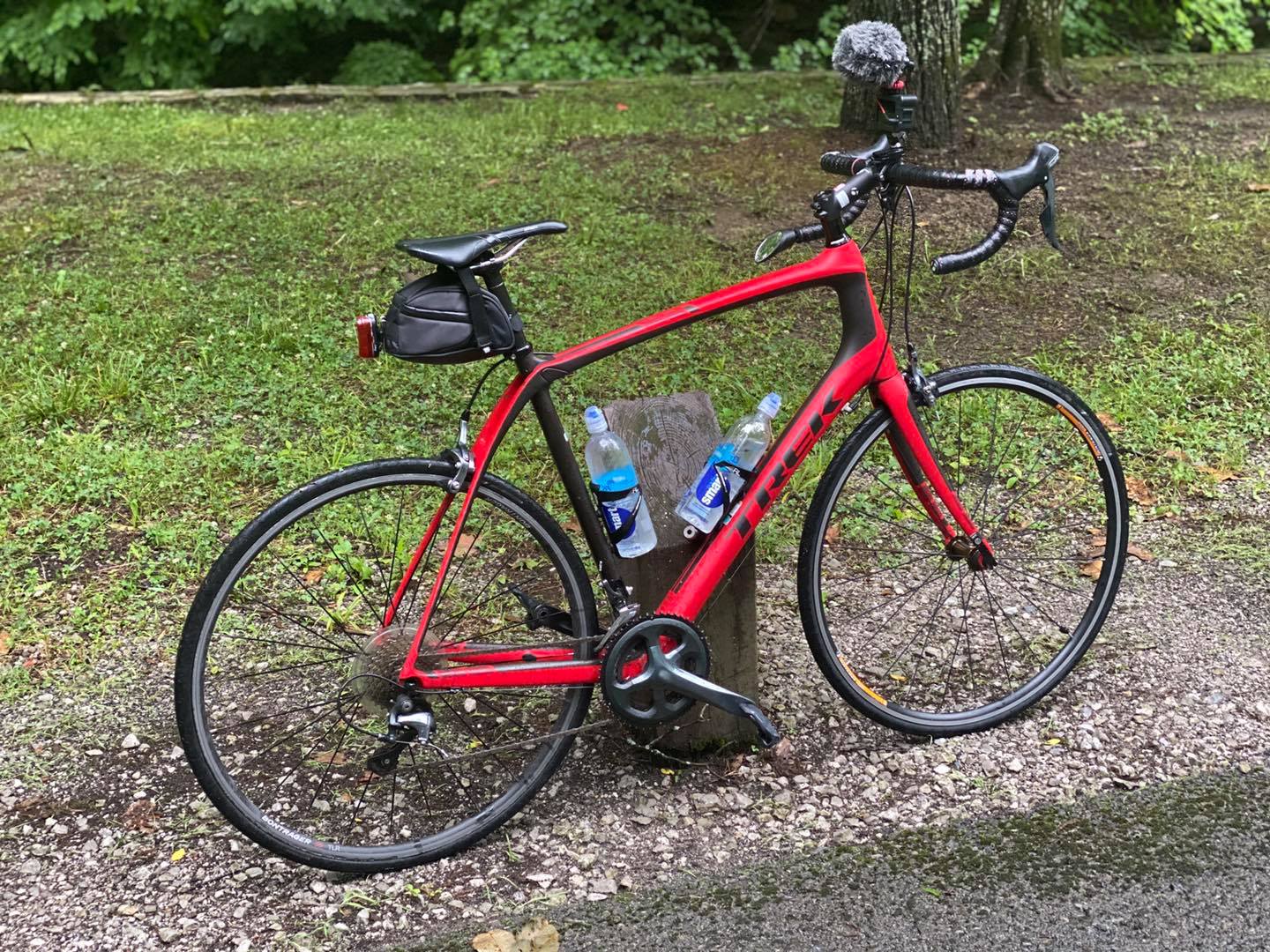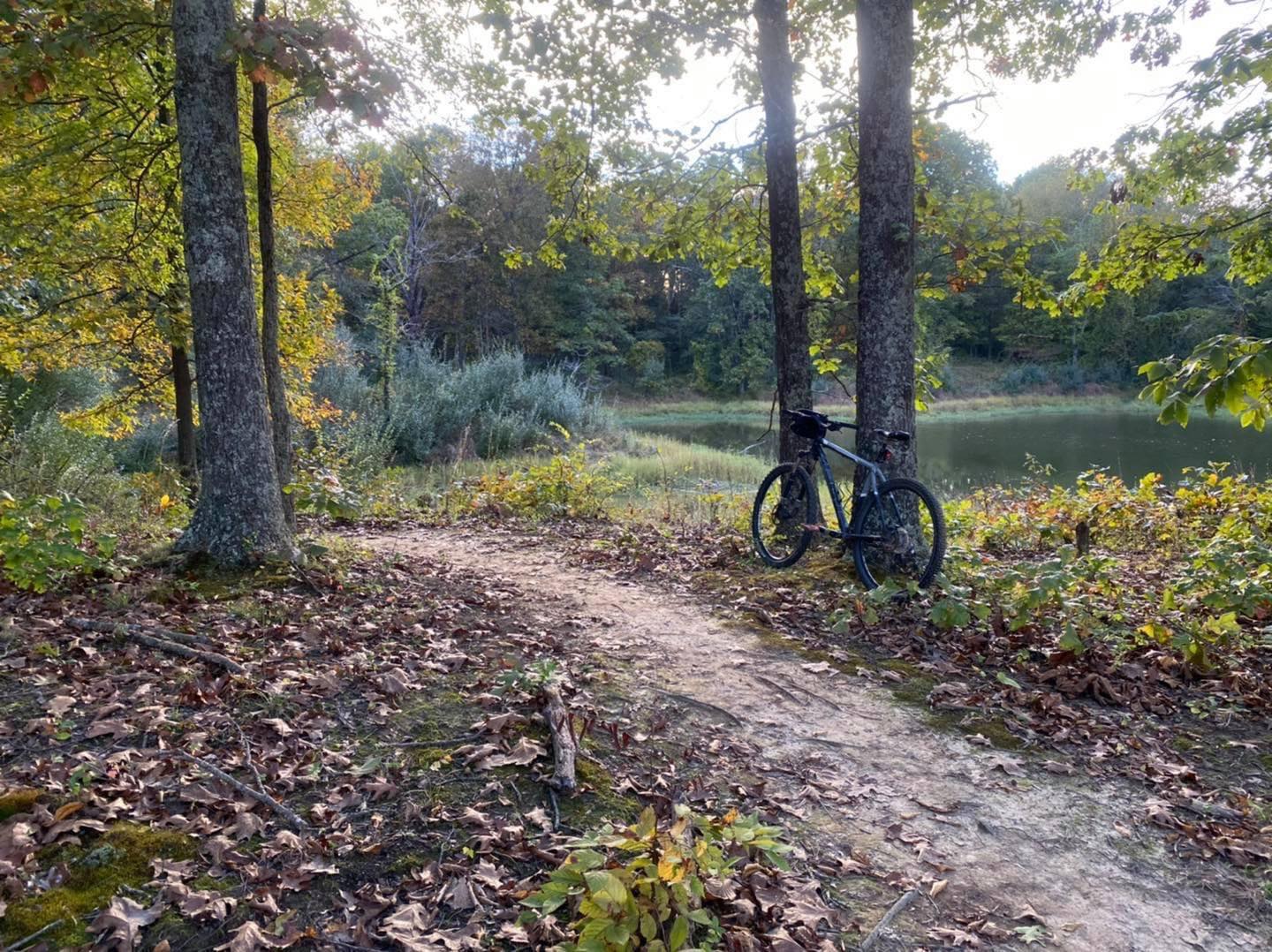How to Bike Uphill and Downhill (An Ultimate Guide for Hilly Cycling)
Do you know how to bike uphill?
Many beginner cyclists don’t have a good uphill riding technique. That can be a bummer when you’re actually having to go uphill on your bike. It can turn into a bad experience for you.
It doesn’t have to be, though.
There are plenty of ways you can bike uphill without feeling like you’re going to fall over. There are many techniques to learn to make hill climbing much easier on your bike.
In this guide, I’ll be showing you practically everything you need to know on going uphill and even downhill on any type of bike.
Why does it matter to Bike Uphill?
There are many benefits to gain when you bike uphill.
Learning how to conquer uphill and downhill cycling challenges will only make you a stronger cyclist. If you go around avoiding all hilly terrain on your bike, you’ll never get to fully enjoy the benefits of being able to bike anywhere.
Once you master hill climbing on a bike, everything else tends to get easier.
Hill climbing has way more benefits than that, too.
It’ll help make you a stronger person in general and give you powerful lower-body muscles. It can help you lose more weight if you’re trying to do that on your bike. It helps you train for harder bike rides and upcoming races. It lets you take full advantage of your cycling route.
When you bike uphill, you simply get better at cycling altogether.
Tips to Help You Bike Uphill
The following tips will help you bike uphill better than you’ve ever been able to before. It’s important to remember that practice makes perfect. Take these tips and what you learn about climbing on your own and keep repeating them to get better at it.
Bike Gear Selection
When it comes to biking uphill, your gear selection is what matters the most.
If you choose the wrong gear configuration, you’ll likely have a hard time getting up the hill. You could even crash in the process of trying to bike uphill. It’s important to understand how to use your gears before you start riding up and down hills on your bike.
When you bike uphill, you want to go for a lower gear ratio. This means you want to use the smallest chainring in the front if you have multiple chainrings and the largest chainring in the rear of the bike. Make sure the chain isn’t making a loud noise as you pedal, or it’s not grinding against the bike frame. If it is, you’ll need to gear up on the rear until you’re in the right combination.
Try to maintain a steady cadence of about 70 to 90 revolutions per minute. A revolution is when you pedal all the way around to where you started the pedal. When you maintain a smooth cadence with your revolutions, cycling gets much easier.
Practice gearing and using cadence to help you get better at going uphill, and you’ll quickly start to get better at it.
Body Positioning
It’s important to position your body correctly when you bike uphill in order to take full advantage of what your posture can do to help you climb the hill better.
While keeping your back straight, slightly lean forward, bending at your hips as you bike uphill. This position will help you use your core to help you climb up more efficiently. Try to keep your hands relaxed on the handlebar. Don’t squeeze it too tightly, as it will most often cause discomfort.
Relax your shoulders and try to evenly distribute your weight. You don’t want to put too much weight into your forward lean. You might need to change saddle positions by moving back or moving forward to evenly distribute your weight better.
Adjust your positioning as needed to make climbing comfortable, but definitely start to depend on the way you sit and posture yourself on the bike when climbing.
Pacing and Breathing
Pacing and breathing correctly are both very important aspects of going uphill on your bike.
When starting a climb, don’t go overboard. Don’t start out fast and hard. Pace yourself and find a comfortable rhythm to ride at. You might need to adjust it as you continue climbing. Maybe you need to slow down a little. You might even need to speed up. Don’t react too quickly, and pace yourself based on what you find comfortable.
Breathe in through your nose and breath out through your mouth. When you breathe in, take deep belly breaths as you start to climb uphill. Try to get your breathing right and consistent. Breathing is a big part of a successful bike uphill.
Don’t be afraid to stop and take a quick break if the hill is getting the best of you. We all have to take a break at some point.
Mental Strategies
It’s important to train your mind to be able to handle cycling uphill, too.
One thing you should do is to set smaller goals that lead up to bigger ones. Start out small and practice on a smaller grade hill until you master it. Once you beat that hill, move to another hill that is slightly steeper or has more grade. Keep gradually moving up until you get to the level you want to be at when you bike uphill.
It’s important to stay positive throughout your uphill climbing journey. Meditate, do some yoga, or do whatever you have to do to put yourself in a good mood before you start climbing. Try to stay in a good mood and remember what climbing can do for you. If you bike uphill and it’s a negative experience the entire time, uphill cycling might not be for you.
Cycling should be a positive experience. Sure, we all have our bad days, but overall, it should always end with a smile on our faces.
Tips to Help You Bike Downhill
We’ve talked about tips to help you bike uphill, but what about cycling downhill? Going downhill also requires some technique since you’ll typically ride your fastest at that point.
Body Positioning
It’s important to position yourself correctly when cycling downhill.
You don’t want to shift yourself forward like you do when you bike uphill. You want to lean back towards the rear of the bike to distribute weight towards the rear. If you lean forward, you risk getting into a wreck, especially if you have to brake really hard.
Keep your elbows and knees bent as you go downhill. This will help you absorb the shock and friction that often come with going downhill. It also helps to keep you loose in the event that you wreck. The last thing you want is to tighten up as you hit the ground. That’s where more injuries will come into play.
You’re pretty much doing the opposite of what you’d do when you bike uphill.
Braking Techniques
When going downhill, it’s important to use proper braking techniques, or you can cause yourself to wreck.
Try to use both your front and back brakes at the same time. Don’t squeeze them really hard. Just lightly squeeze each one together or in a back-and-forth pattern to slow you down to the speed you want to be at. You’ll need to “play with it” a bit to figure out the best configuration to slow you down. You should be fine as long as you don’t brake too hard.
Only brake hard if it’s an emergency. At that point, it’s best to brake hard using your rear brake more than your front. While braking hard on your rear brake, you can also slightly apply your front brake to help slow you down. Keep an eye on what’s in front of you to avoid having to brake hard to begin with.
Braking too hard can be hard on your rims and your braking system.
Line Selection
Looking ahead is your biggest advantage when you bike uphill, and it’s even more important when you bike downhill.
Look for the smoothest way down the hill. Take that route over anything else. If the terrain is smooth, you can pretty much let yourself go full speed all the way down the hill. If there isn’t a smooth route, choose the route that looks the best.
However, be sure to prepare for obstacles and turn of events. Is there a hidden road or trail junction? Are there potholes or rocky conditions? Anticipate hazards and obstacles that are in your way and make sure you take precautions to avoid an impact with them.
Not being distracted while biking downhill is critical to your safety on your bike.
Confidence Building
Like when you bike uphill, going downhill is just as much a mental thing as going up.
The same strategy can be applied to biking downhill as it would when you bike uphill. Focus on smaller goals leading to a larger goal you eventually hope to accomplish. Focus on downhill sections that are small and relatively safer than others. Work on getting good on smaller descents, and then go for larger ones as your technique improves.
Try to visualize a successful descent as you’re going downhill. The more positive energy you create and the confidence you give yourself, the easier it will be to go downhill. You should also try to remain positive about it. Try not to let fear take over. It gets easier with practice.
The more confidence you have, the easier hills overall will be for you.
How to Bike Uphill and Downhill with Safety in Mind
You must keep safety in mind when you bike uphill and downhill. If you’re not being safe about it, you will likely increase your chances of experiencing something negative.
Equipment Check
Make sure your bike and equipment are stable enough to be used in hilly terrain and conditions.
You just check your brakes on a routine basis. Your brakes should always work correctly. If they aren’t working the way they should be, then you need to get them repaired as soon as possible. A bad brake can mean a serious hazard for you if you don’t get it taken care of.
Check your tire pressure before every ride. It doesn’t take much for air to deflate from bike tires. Most cyclists, especially on road bikes, will have to air their tires up every other day. It’s a good idea to check every day, though, just in case there is an issue with your tire. You should also make sure your tires are in good condition, and the tread is right. Replace your tires and tubes as needed.
You should also ensure that you wear proper safety gear when you plan to bike uphill and downhill. Wear a helmet at all times. Wear gloves so you can maintain a grip on your handlebars. Wear bright cycling clothing to enhance your visibility on the roadways. You might also consider skin-tight apparel to help you go downhill smoothly.
Take safety precautions to ensure that you have a provide experience when cycling in hill country.
Environmental Awareness
Prepare for the elements that you have no control over when cycling in hilly areas.
Check the weather before you go, and make sure you prepare for it. Check road conditions such as traffic and accidents, and know when rush hour is if you will be cycling on the road with vehicle drivers. Check for updates when you can safely do so.
When going downhill, watch for the living environmental hazards that may be present as well. There are loose pets and actual wildlife. They might also be vehicles and other cyclists. It could even be people walking, jogging, or going across the road to check their mail. Be prepared for what comes over the hill you’re getting ready to bike down at a faster rate of speed.
Prepare yourself for what you usually aren’t able to stop from happening.
Communication and Signaling
Make sure everyone else around you understands your next move.
Make sure you are using proper hand signals. The four signals to learn the most are left turn, right turn, slowing down, and pointing to hazards in the roadway. These signals will help keep you alive and safe while helping others stay safe. Get to know these signals and make it a habit to use them.
If riding in a group, make sure you communicate with your fellow cyclists. Going up and downhill in a group will increase the risk and potential for an accident if something goes wrong. Effective communication is required in this circumstance.
If no one knows what you’re going to do next, their actions could cause you a lot of problems.
Final Thoughts on How to Bike Uphill
It’s easy to bike uphill and downhill once you get your technique right. Following the advice above and plenty of practice will ensure that you can develop your technique. All beginner cyclists should learn how to ride uphill and downhill effectively. It really does have a lot of extra benefits for your overall ability as a cyclist.
If you’ve enjoyed this article, please share it with other cyclists you know who might enjoy it, too. You can also send me a one-time donation if you’d like to support me that way.
A few new up-and-coming features you might want to get in one, including our free mailing list, which will include weekly beginner cycling tips and resources. You might also want to create a free account on our website for features to come.
About Shawn Gossman
Shawn Gossman is the author of this post and founder of the Beginner Cycling Tips Blog.
Shawn has been an avid cyclist for around 12 years. He road, gravel, mountain, and trail bikes. He likes adventuring more than racing.




